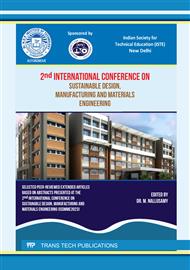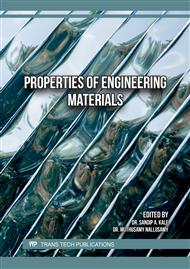p.21
p.29
p.43
p.53
p.61
p.69
p.77
p.85
p.97
Effect of Combined Internal Structure on Mechanical Properties of FDM 3D Printed Parts
Abstract:
Commercial and industrial use of 3D printing has swiftly taken off as a versatile and effective method of manufacturing on both a small and large scale. Despite being adaptable, the procedure currently works with a restricted number of materials, mostly thermoplastic polymers. 3D printing fused deposition modeling (FDM) provides opportunities to produce complex components relatively quickly in small batch with a high degree of flexibility for both manufacturer and researcher. Process parameters in FDM like infill pattern, infill density, printing speed, raster angle influences the mechanical properties of a printed parts. In this research study, a novel approach on the internal structure of 3D printed parts say combined infill pattern (Triangles & Octet) on a single part has been introduced and mechanical properties like tensile test, flexural strength, compression strength and hardness were measured. Specimens were printed in Acrylonitrile butadiene styrene (ABS) as per ASTM standards by FDM technology with different infill densities of 60%, 80% and 100% by XY build orientation. SEM analysis was made to analyze the morphological and inter bonding of different infill patterns. The results show that mechanical performance was inflated by an increase in infill density.
Info:
Periodical:
Pages:
61-67
Citation:
Online since:
April 2024
Authors:
Keywords:
Price:
Сopyright:
© 2024 Trans Tech Publications Ltd. All Rights Reserved
Share:
Citation:



